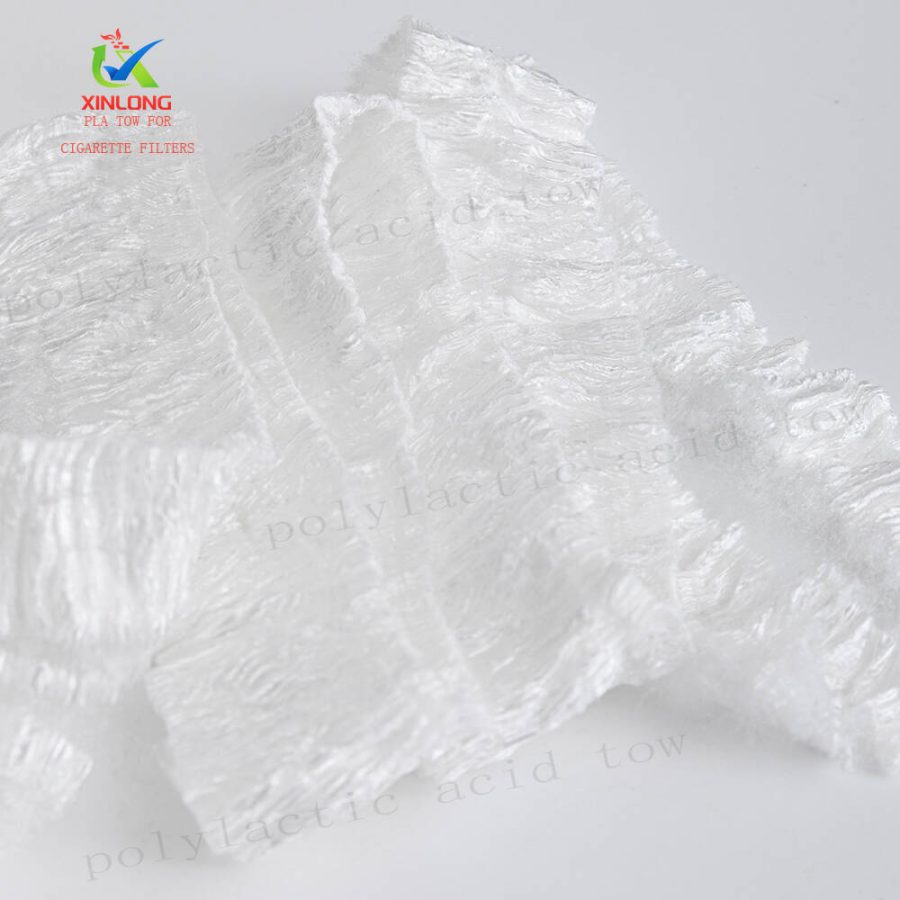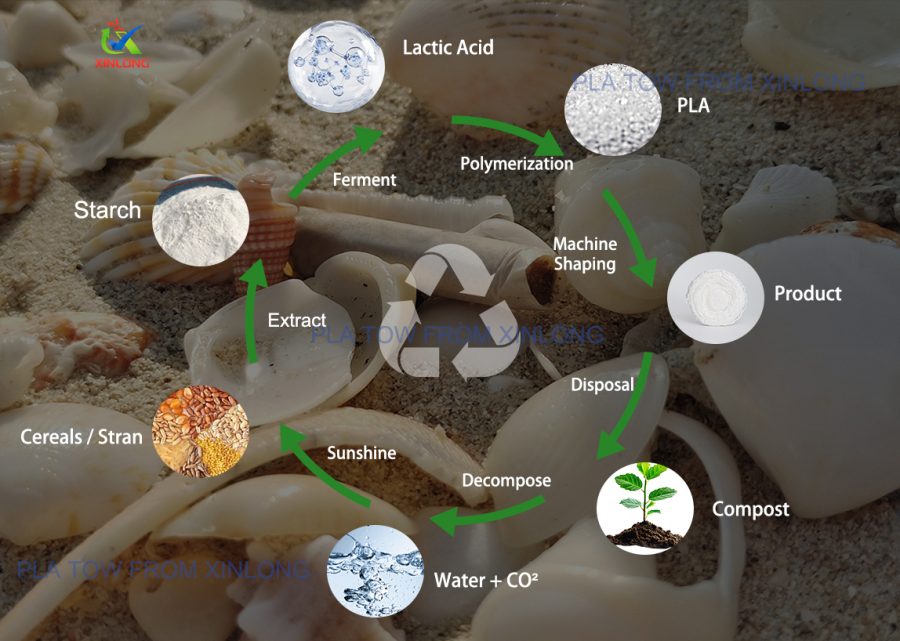PLA Tow VS Cellulose Acetate Tow ———– A Sustainable Shift in Cigarette Filter Technology
Introduction
With growing environmental concerns, the tobacco industry is actively exploring sustainable alternatives to traditional filter materials.
PLA (Polylactic Acid) tow is emerging as a viable and scalable alternative to cellulose acetate tow.

Material Source Comparison
| Feature | Cellulose Acetate Tow | PLA Tow |
| Raw Material | Wood pulp, partially petrochemical | 100% plant-based (e.g., corn, cassava) |
| Sustainability | Limited | Renewable and compostable |
Environmental Impact
Cellulose Acetate Tow:
Slow degradation
Microplastic pollution risk
PLA Tow:
Fully biodegradable (industrial or compost)
Degrades into CO₂ and water

Processing & Performance
| Aspect | Cellulose Acetate Tow | PLA Tow |
| Equipment Compatibility | Fully compatible | Fully compatible (KDF machines, etc.) |
| Pressure Drop Control | Mature | Optimized & controllable |
| Physical Stability | High | Stable with controlled storage |
Market Readiness
Cellulose Acetate Tow:
Established market
Wide global adoption
PLA Tow
Now in stable mass production
Adopted by multiple tobacco brands
Growing demand in EU, Asia, and HNB applications

Cost & Supply Chain
| Factor | Cellulose Acetate Tow | PLA Tow |
| Pricing | Previously cheaper | Currently more cost-effective |
| Supply Capacity | Stable | Scalable & ready for large orders |

Summary
PLA tow is no longer an experimental material — it is technically mature, commercially available, and environmentally superior.
As regulations tighten and consumer preferences shift, PLA provides a clear path toward a greener future in filter production.
Let’s Collaborate
Your Sustainable Filter Partner: Jiangyin Xinlong Technology Co., Ltd
Custom solutions with PLA Tow
Technical support for transition
Global logistics and delivery
Contact us to learn more.

